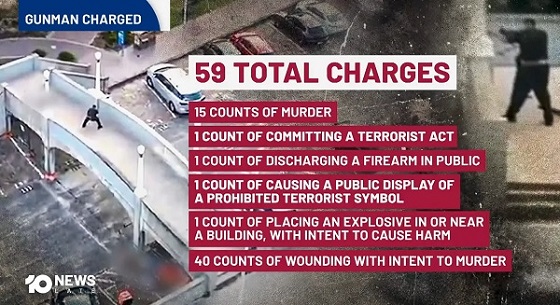News
ASIRT report released on incident which left Const. Dan Woodall dead

On June 8, 2015, pursuant to section 46.1 of the Police Act, the Alberta Serious Incident Response Team (ASIRT) was directed to investigate the circumstances surrounding the death of Norman Walter Raddatz following an incident involving the Edmonton Police Service (EPS) and the attempted execution of an arrest warrant that resulted in the death of one officer, Const. Daniel Woodall, and the serious injury of another officer.
When a person dies in the custody of police, ASIRT might be directed to investigate whether police conduct caused or contributed to the death of a person, and if so, whether the police conduct was lawful. In cases such as this, when police have surrounded a residence with the intent to apprehend someone inside, that is considered an “in custody” event as the subject is contained and his or her movements are controlled such that he or she is not free to exit the residence and leave the area. That was the situation on June 8, 2015 with Norman Raddatz.
At the time of this incident, Raddatz was 42 years old, divorced and living alone in his house in the west end of Edmonton. He had no criminal record but for a single conviction in 1991 for an impaired driving-related offence. He had continuing disputes with bylaw enforcement regarding the parking of a recreational vehicle and the maintenance of his property, and had six convictions for bylaw offences in the preceding three months.
In April 2015, EPS received a complaint from an Edmonton man that Raddatz had been posting anti-Semitic comments and hate-filled messages online. The complainant and Raddatz had been friends but the relationship deteriorated in 2012 after Raddatz found out that the complainant was Jewish and also as a result of a dispute over money. The complainant feared for his safety, particularly if Raddatz had been drinking.
In addition to the online activity in relation to the complainant, Raddatz also frequently conveyed anti-banking institution and anti-bylaw enforcement/government messages.
After an investigation, police felt there was sufficient evidence to charge Raddatz with criminal harassment in relation to the continued online messaging. An outstanding warrant for a bylaw offence was also located. On June 8, 2015, EPS officers went to Raddatz’s home to place him under arrest.
They arrived on scene and knocked on the door of the home. Raddatz came to the front door but refused to open it to speak with police. EPS members identified themselves as police officers and advised Raddatz that they were there for a serious matter and would like to speak with him. They advised him that they needed to speak with him, that he was going to be placed under arrest for criminal harassment but that they were going to release him on a document called a Promise to Appear, meaning that it was not their intention to hold him in custody. Raddatz refused to open the door, prompting officers to tell Raddatz that they would get a warrant to enter and arrest him, if necessary. Raddatz responded, ”Go get a warrant, I’m not opening the door.” At the time, Raddatz appeared sober and calm — albeit uncooperative.
Although it took a little over one hour, the involved officers ultimately obtained the necessary warrant to enter the home to make the arrest.
During the time that the warrant was being obtained, Raddatz was speaking with the officers and observed through windows to be walking throughout the residence. His behaviour didn’t raise any concerns at the time and Raddatz didn’t make any threatening comments that suggested he would become violent. Raddatz told officers to leave his property until they had a warrant.
Once officers obtained the warrant, they went to a window and showed Raddatz the actual document, in the hope that he would surrender without the necessity of a forcible entry into the home. There was a conversation about the warrant as Raddatz could not see where it referred to criminal harassment and the document was explained to him. Raddatz chose not to open the door and/or surrender, even after being advised that police would forcibly enter the home if he did not comply. He replied with an expletive, “This is _____,” and walked away, out of view, immediately before the officers proceeded to attempt entry.
Four officers were standing at the front door when they tried entering the home using a battering ram. The door was struck three times and almost contemporaneous with the third strike, Raddatz fired shots through the front door, striking two of the four officers. Both officers were wearing their police-issued body armour. One officer sustained a single gunshot wound to the lower torso while the second officer, Const. Dan Woodall, sustained fatal injuries as a result of multiple gunshot wounds. Raddatz continued to fire at officers positioned outside the residence for an extended period of time. Many of those shots penetrated nearby vehicles and residences.
Not a single shot was fired by any member of the Edmonton Police Service. This was confirmed by all the evidence, including that of civilian witnesses in the area. At no time did any of the officers have a safe opportunity to do so, as they never actually saw Raddatz again after their conversation with him through the window.
During the ensuing standoff, Raddatz continued to fire shots from his residence. After some time, smoke was seen coming from inside the home. It became apparent that a fire had started within the home. Officers had no way of knowing where Raddatz was within the home, making it impossible to ensure safe entry to secure him without unreasonable risk to the lives and safety of others. Officers and firefighters were left with the only option to wait. Given Raddatz’s continuing unrestrained, uncontrolled and unpredictable shooting from inside the home, it was not possible for firefighters to even approach to try to control or put out the fire without placing themselves at imminent risk of death or serious bodily harm.
In these circumstances, the fire ultimately consumed the entire home without police and first responders having any idea of Raddatz’s location, or what had taken place inside the residence.The residence was safely entered the next day by Edmonton Fire personnel, police and ASIRT investigators who were on scene.
Once entry was made, evidence of a homemade bomb was located in what was believed to have been a front closet. The remains of a dog were found in the kitchen area. The dog had been shot. Raddatz’s remains were recovered in an area of the house that was believed to have been a bedroom. Parts of multiple firearms that survived the fire were located within the residence, including one found in close proximity to where the remains were located.
An autopsy conducted by the Office of the Chief Medical Examiner determined that Raddatz died of a self-inflicted gunshot wound to his head. Additionally, the autopsy found no soot in his airway, which would suggest that he died prior to fire overtaking the area he was in and, as such, the fire played no role in his death.
Examining the conduct of the involved police officers, it is beyond question that all the officers were lawfully placed and engaged in the lawful execution of their duties. Having obtained the warrant, they had the lawful authority to enter the home and arrest Raddatz. Nothing they did in their attempt to do so exceeded their lawful authority or was unreasonable. There is no evidence or even reasonable suspicion to believe that the officers did anything wrong that day that caused or contributed to the death of Raddatz.
Words will never fully express the magnitude of the tragedy on this day and the countless lives that were impacted and changed. ASIRT extends its condolences to the Raddatz family, as Norman Raddatz’s actions were his own, not those of his family members, who were among those left devastated by his actions.
Our sincere condolences are also extended to the family of Const. Daniel Woodall in their senseless and unimaginable loss of a husband, father and son. They have shown considerable grace and strength throughout this time. Our hearts go out to all the involved officers that day and their families during this unspeakably horrific event and its aftermath, the Edmonton Police Service as a whole, and to the Alberta policing community. This case is a stark reminder of the potential risks law enforcement face everyday as they work to keep our communities safe.
Business
There’s No Bias at CBC News, You Say? Well, OK…

It’s been nearly a year since I last wrote about the CBC. In the intervening months, the Prescott memo on bias at the BBC was released, whose stunning allegations of systemic journalistic malpractice “inspired” multiple senior officials to leave the corporation. Given how the institutional bias driving problems at the BBC is undoubtedly widely shared by CBC employees, I’d be surprised if there weren’t similar flaws embedded inside the stuff we’re being fed here in Canada.
Apparently, besides receiving nearly two billion dollars¹ annually in direct and indirect government funding, CBC also employs around a third of all of Canada’s full time journalists. So taxpayers have a legitimate interest in knowing what we’re getting out of the deal.
Naturally, corporate president Marie-Philippe Bouchard has solemnly denied the existence of any bias in CBC reporting. But I’d be more comfortable seeing some evidence of that with my own eyes. Given that I personally can easily go multiple months without watching any CBC programming or even visiting their website, “my own eyes” will require some creative redefinition.
So this time around I collected the titles and descriptions from nearly 300 stories that were randomly chosen from the CBC Top Stories RSS feed from the first half of 2025. You can view the results for yourself here. I then used AI tools to analyze the data for possible bias (how events are interpreted) and agendas (which events are selected). I also looked for:
- Institutional viewpoint bias
- Public-sector framing
- Cultural-identity prioritization
- Government-source dependency
- Social-progressive emphasis
Here’s what I discovered.
Story Selection Bias
Millions of things happen every day. And many thousands of those might be of interest to Canadians. Naturally, no news publisher has the bandwidth to cover all of them, so deciding which stories to include in anyone’s Top Story feed will involve a lot of filtering. To give us a sense of what filtering standards are used at the CBC, let’s break down coverage by topic.
Of the 300 stories covered by my data, around 30 percent – month after month – focused on Donald Trump and U.S.- Canada relations. Another 12-15 percent related to Gaza and the Israel-Palestine conflict. Domestic politics – including election coverage – took up another 12 percent, Indigenous issues attracted 9 percent, climate and the environment grabbed 8 percent, and gender identity, health-care worker assaults, immigrant suffering, and crime attracted around 4 percent each.
Now here’s a partial list of significant stories from the target time frame (the first half of 2025) that weren’t meaningfully represented in my sample of CBC’s Top Stories:
- Housing affordability crisis barely appears (one of the top voter concerns in actual 2025 polls).
- Immigration levels and labour-market impact.
- Crime-rate increases or policing controversies (unless tied to Indigenous or racialized victims).
- Private-sector investment success stories.
- Any sustained positive coverage of the oil/gas sector (even when prices are high).
- Critical examination of public-sector growth or pension liabilities.
- Chinese interference or CCP influence in Canada (despite ongoing inquiries in real life).
- The rest of the known galaxy (besides Gaza and the U.S.)
Interpretation Bias
There’s an obvious pattern of favoring certain identity narratives. The Indigenous are always framed as victims of historic injustice, Palestinian and Gazan actions are overwhelmingly sympathetic, while anything done by Israelis is “aggression”. Transgender representation in uniformly affirmative while dissent is bigotry.
By contrast, stories critical of immigration policy, sympathetic to Israeli/Jewish perspectives, or skeptical of gender medicine are virtually non-existent in this sample.
That’s not to say that, in the real world, injustice doesn’t exist. It surely does. But a neutral and objective news service should be able to present important stories using a neutral and objective voice. That obviously doesn’t happen at the CBC.
Consider these obvious examples:
- “Trump claims there are only ‘2 genders.’ Historians say that’s never been true” – here’s an overt editorial contradiction in the headline itself.
- “Trump bans transgender female athletes from women’s sports” which is framed as an attack rather than a policy debate.
And your choice of wording counts more than you might realize. Verbs like “slams”, “blasts”, and “warns” are used almost exclusively describing the actions of conservative figures like Trump, Poilievre, or Danielle Smith, while “experts say”, “historians say”, and “doctors say” are repeatedly used to rebut conservative policy.
Similarly, Palestinian casualties are invariably “killed“ by Israeli forces – using the active voice – while Israeli casualties, when mentioned at all, are described using the passive voice.
Institutional Viewpoint Bias
A primary – perhaps the primary job – of a serious journalist is to challenge the government’s narrative. Because if journalists don’t even try to hold public officials to account, then no one else can. Even the valuable work of the Auditor General or the Parliamentary Budget Officer will be wasted, because there will be no one to amplify their claims of wrongdoing. And Canadians will have no way of hearing the bad news.
So it can’t be a good sign when around 62 percent of domestic political stories published by the nation’s public broadcaster either quote government (federal or provincial) sources as the primary voice, or are framed around government announcements, reports, funding promises, or inquiries.
In other words, a majority of what the CBC does involves providing stenography services for their paymasters.
Here are just a few examples:
- “Federal government apologizes for ‘profound harm’ of Dundas Harbour relocations”
- “Jordan’s Principle funding… being extended through 2026: Indigenous Services”
- “Liberal government announces dental care expansion the day before expected election call”
Agencies like the Bank of Canada, Indigenous Services Canada, and Transportation Safety Board are routinely presented as authoritative and neutral. By contrast, opposition or industry critiques are usually presented as secondary (“…but critics say”) or are simply invisible. Overall, private-sector actors like airlines, oil companies, or developers are far more likely to be criticized.
All this is classic institutional bias: the state and its agencies are the default lens through which reality is filtered.
Not unlike the horrors going on at the BBC, much of this bias is likely unconscious. I’m sure that presenting this evidence to CBC editors and managers would evoke little more than blank stares. This stuff flies way below the radar.
But as one of the AI tools I used concluded:
In short, this 2025 CBC RSS sample shows a very strong and consistent left-progressive institutional bias both in story selection (agenda) and in framing (interpretation). The outlet functions less as a neutral public broadcaster and more as an amplifier of government, public-sector, and social-progressive narratives, with particular hostility reserved for Donald Trump, Canadian conservatives, and anything that could be construed as “right-wing misinformation.”
And here’s the bottom line from a second tool:
The data reveals a consistent editorial worldview where legitimate change flows from institutions downward, identity group membership is newsworthy, and systemic intervention is the default solution framework.
You might also enjoy:
Is Updating a Few Thousand Readers Worth a Half Million Taxpayer Dollars? |
||||||
|
||||||
| Plenty has been written about the many difficulties faced by legacy news media operations. You might even recall reading about the troubled CBC and the Liberal government’s ill-fated Online News Act in these very pages. Traditional subscription and broadcast models are drying up, and on-line ad-based revenues are in sharp decline. | ||||||
|
Daily Caller
Bari Weiss Reportedly Planning To Blow Up Legacy Media Giant


From the Daily Caller News Foundation
CBS News editor-in-chief Bari Weiss is reportedly planning to dramatically change the network’s coverage to eliminate left-wing bias and make the newsroom more efficient.
Weiss has been handed a mandate for change by Paramount SkyDance’s David Ellison, the CEO of CBS News’ parent company, which bought her company, The Free Press, for $150 million, according to The Wall Street Journal (WSJ). Ellison wants Weiss to bring “news that reflects reality” and journalism that “doesn’t seek to demonize, but seeks to understand.”
“I wanna blow things up,” Weiss has reportedly told her colleagues during meetings.
During the hiring process, Weiss has reached out to outside talent directly rather than speaking to their agents, which is considered the traditional method of communication, according to the WSJ. She has also reportedly been highly involved in booking guests in an attempt to fix the network’s ratings and make a lasting change.
Weiss is focused on trying to reshape “CBS Evening News,” which has consistently ranked third place in comparison to the evening programs on ABC News and NBC News. “CBS Evening News” typically averages around 4 million total viewers. On the week of November 3, the program garnered 4.2 million total viewers and 564,000 viewers in the 25 to 54 key demographic, while “NBC Nightly News” and “ABC World News Tonight” averaged 7.2 million and 6.6 million total viewers, as well as 929,000 and 883,000 in the 25-54 demo, according to AdWeek.
John Dickerson, who currently hosts “CBS Evening News,” announced on Oct. 27 that he will be departing the network in January. Weiss has reportedly considered poaching CNN’s Anderson Cooper and Fox News’ Bret Baier, though Baier said he will remain at Fox News in the short-term since his contract goes through the end of 2028, according to the WSJ.
A source close to Cooper told the WSJ that the CNN host is not interested in hosting “CBS Evening News.”
“CBS Mornings” host Gayle King’s contract is up in early 2026, prompting Weiss to reportedly consider finding a cheaper alternative to her $15 million salary, according to WSJ.
The median age of viewers who watch CBS News is 58 years old, according to a Pew Research survey.
When she stepped into her role, Weiss sent emails to staff asking them to outline their jobs and provide feedback on “how we can make CBS News the most trusted news organization in America and the world.” Weiss said she would have had to “throw in the towel a very, very long time ago” if she were concerned about the negative press her decisions will receive.
Approximately 100 staffers were laid off once Weiss took over in October, which were part of Paramount’s layoffs of about 1,000 employees. The CBS News Race and Culture Unit, founded in July 2020, was completely wiped out as part of the layoffs.
-

 Business2 days ago
Business2 days agoOttawa Pretends To Pivot But Keeps Spending Like Trudeau
-

 Agriculture19 hours ago
Agriculture19 hours agoWhy is Canada paying for dairy ‘losses’ during a boom?
-

 Automotive1 day ago
Automotive1 day agoFord’s EV Fiasco Fallout Hits Hard
-

 Censorship Industrial Complex2 days ago
Censorship Industrial Complex2 days agoHow Wikipedia Got Captured: Leftist Editors & Foreign Influence On Internet’s Biggest Source of Info
-

 Crime2 days ago
Crime2 days agoThe Uncomfortable Demographics of Islamist Bloodshed—and Why “Islamophobia” Deflection Increases the Threat
-

 Alberta20 hours ago
Alberta20 hours agoAlberta’s new diagnostic policy appears to meet standard for Canada Health Act compliance
-

 Censorship Industrial Complex21 hours ago
Censorship Industrial Complex21 hours agoTop constitutional lawyer warns against Liberal bills that could turn Canada into ‘police state’
-

 espionage2 days ago
espionage2 days agoCarney Floor Crossing Raises Counterintelligence Questions aimed at China, Former Senior Mountie Argues









